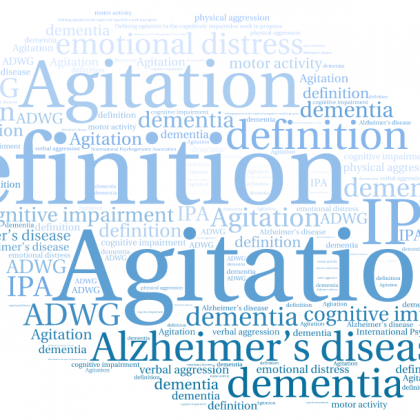Which behaviours and symptoms are the most distressing for family carers of people with dementia?
The November International Psychogeriatrics Article of the Month is entitled “A systematic review of the relationship between behavioral and psychological symptoms (BPSD) and caregiver well-being” by Alexandra Feast, Esme Moniz-Cook, Charlotte Stoner, Georgina Charlesworth, Martin Orrell.
During the course of dementia the vast majority of people will experience some form of behavioural or psychological symptoms (BPSD). BPSD include agitation, aggression, calling out repeatedly, sleep disturbance, and lack of interest and motivation. Numerous studies have reported that these BPSD can be a major source of distress for family caregivers of people with dementia. BPSD are also important predictors of family caregiver depression, burden and care home admission.
In the past people tended to group BPSD as one big category without trying to consider whether one symptom was more distressing for family caregivers than the others. We investigated this by reviewing research articles published in English between 1980 and December 2015 which reported which individual BPSD affected caregiver well-being.
So which behaviours and symptoms are the most distressing for family carers? We found 40 research articles which could help answer our question during our search, however, only 20 research articles were comparable and could be used in the analysis. When we looked at the 16 research articles which reported the frequency of BPSD it was found that depression in the person with dementia was the most distressing for caregivers, followed by agitation/aggression, and lack of interest and motivation. As expected, the person with dementia being excessively happy was the least distressing. However, surprisingly, when we looked at research articles that reported the relationship between BPSD and caregiver well-being (4 research articles) rather than frequency, we found that different BPSD were related to higher levels of distress. Irritable behaviour, inability to sit still, and delusions were the most strongly related to distress. Disinhibited behaviours demonstrating a lack of control, disregard for social conventions, impulsivity, and poor risk assessment were the least related to caregiver distress.
What is the take-home message? We are still unsure whether some BPSD impact caregiver well-being more than others. Studies which look at BPSD individually were limited, and had different ways of measuring BPSD and caregiver well-being. In future we need to measure BPSD and caregiver well-being consistently, and also look at BPSD individually rather than as one big category. Once this is addressed we can identify which BPSD affect well-being the most and prioritise these when we develop ways to support caregivers at home. Nevertheless, our inconsistent findings may not just be due to a lack of information and varied types of analysis, they may also be due to the individual differences between what caregivers find upsetting. To fully understand the relationship between caregiver well-being and BPSD, we also need to examine the influence of caregiver variables such as caregiver strategies, acceptance, gender, their relationship with the person with dementia and their confidence. We can then work out whether clinicians should be providing different kinds of support to different caregivers, depending on their circumstances.






When teaching to care staff about dementia and distress behaviours I always start the session with an activity. I ask the group what upsets and gets them angry. Once we can establish how we feel we can then look into the reasons a person with dementia will display distress behaviour and how they may communicate them.